Calico & Camouflage: Assemble!

Working within the 3D virtual realm, Tiohtia:ke/Montreal-based Mohawk artist Skawennati creates projects that posit Indigenous futures. In Calico & Camouflage: Assemble!, a new site-responsive installation, cyberpunk activist avatars reinforce the inseparability of personal fashion and protest. Occupying digital screens and concrete columns at Yonge-Dundas Square, they powerfully uphold Indigenous presence in Tkaron:to/Toronto.

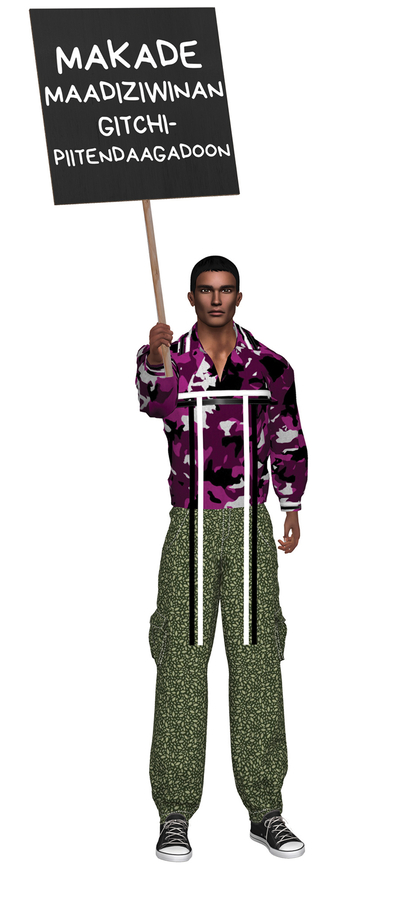


One by one, on each screen, avatars descend into the scene, as if rallied from a not-too-distant future. Young, confident, and Indigenous, they land on a rooftop and strut toward the camera, then seemingly through it, to exit the screen. They assemble on the concrete pillars, as human-sized cut-out still figures. Skawennati’s “machinimas” and “machinimagraphs”—respectively, moving and still images made in a virtual environment—point to the inherent politicization of Indigenous life on occupied land, and to an inextinguishable spirit.
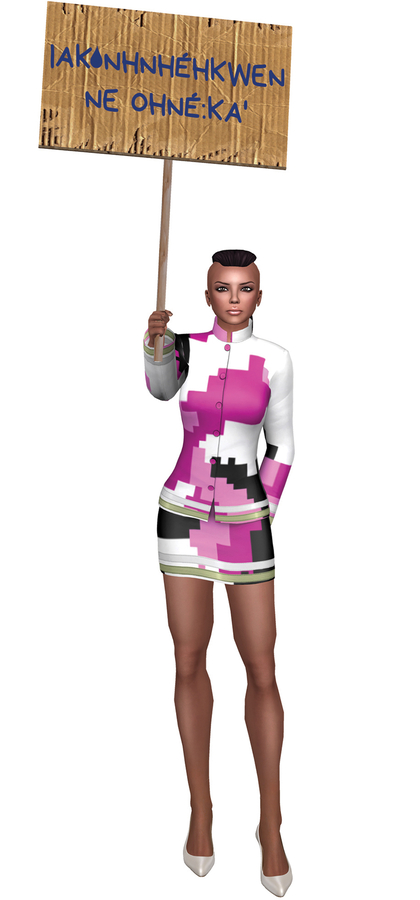

Like models, they wear similar outfits: a fashion line of “resistance wear” designed by Skawennati, called Calico & Camouflage. Conveying meaning through form, material, pattern, and colour, the collection is based on two articles of clothing that Skawennati associates with Indigenous people: the ribbon shirt and combat pants. Ribbon shirts, widely recognized as part of Haudenosaunee, Anishinaabe, and other Indigenous nations’ regalia, are traditionally made with calico-patterned fabric; they assert Indigenous pride in their continued existence in the face of attempted assimilation. Combat pants and other military garb, often employing camouflage patterns, are worn by Indigenous people around the world to demonstrations, protests, and other sites of resistance. In Skawennati’s collection, an updated camo pattern has migrated to the ribbon shirts, while two bold new calicos adorn the army fatigues, bringing the elements into a dialogue that references the history of contact and trade with Europeans; past and present acts of colonization and military aggression; and cultural revitalization. The gun-metal grey, powerful pink, olive green, and computer-screen blue colours are inspired by sites of activism, including city streets, rural roads, courtrooms, and cyberspace.

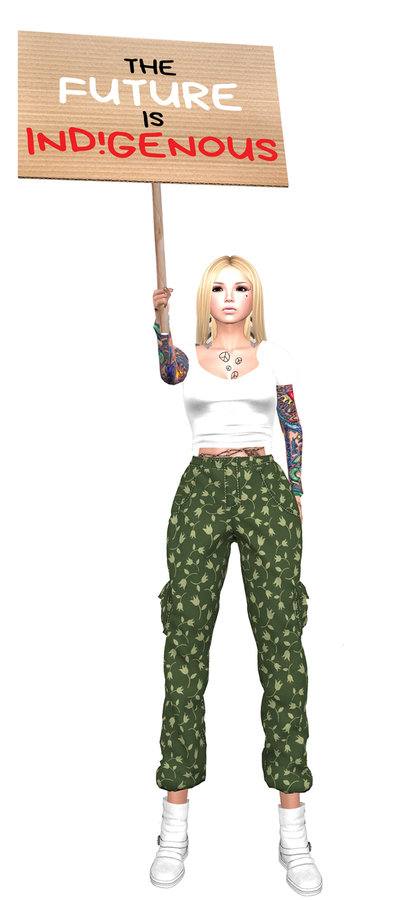
Like protestors, the avatars carry signs. They proclaim, in English, Kanien’keha (Mohawk), and Anishnabemowin, iconic statements such as “Water is Life,” “Black Lives Matter,” and “No More Stolen Sisters.” The artist is present through her own avatar, known as “xox,” whose message reads, “The Beginning is Near.” The tactical positioning of Calico & Camouflage: Assemble! at Yonge-Dundas Square activates Skawennati’s prevailing belief that “The Future is Ind!genous,” as another protest sign declares.
The insertion of these cyberpunk demonstrators among beacons of merchandising and marketing foregrounds activism and simultaneously projects it into the city’s present and future. Speaking to shared global concerns through the united languages of protest and fashion, Skawennati’s work brings Indigenous realities, values, and voices to the forefront of collective consciousness and demonstrates that “Resistance in Fertile” in both digital and physical worlds.
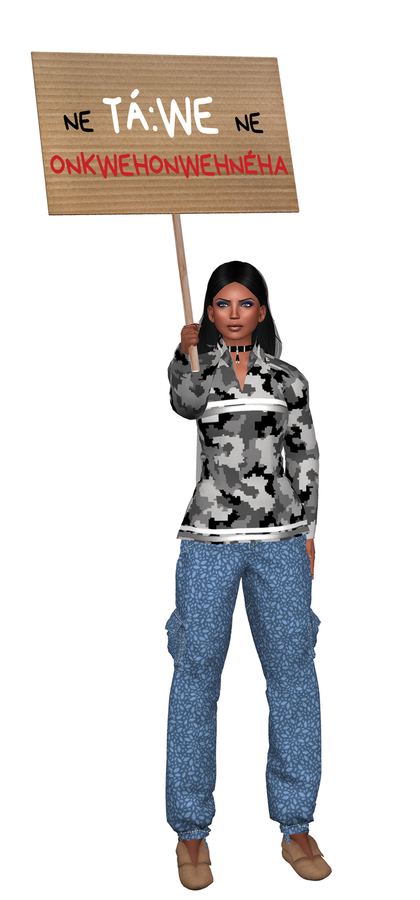
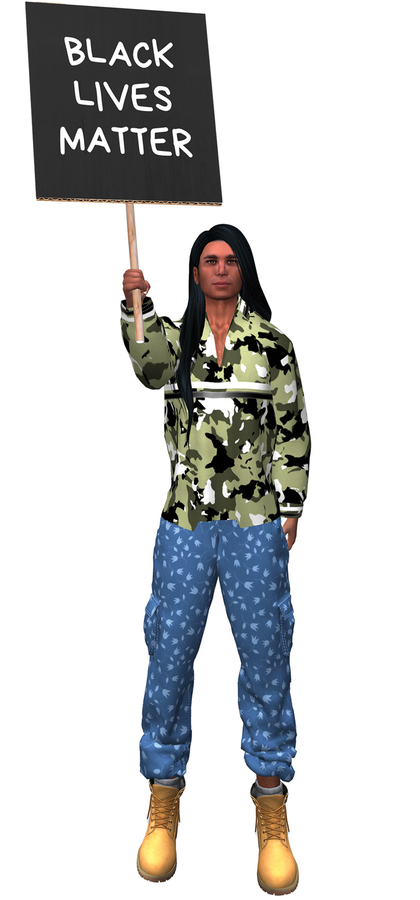
Curated by Bonnie Rubenstein
Co-presented with the Yonge-Dundas Square